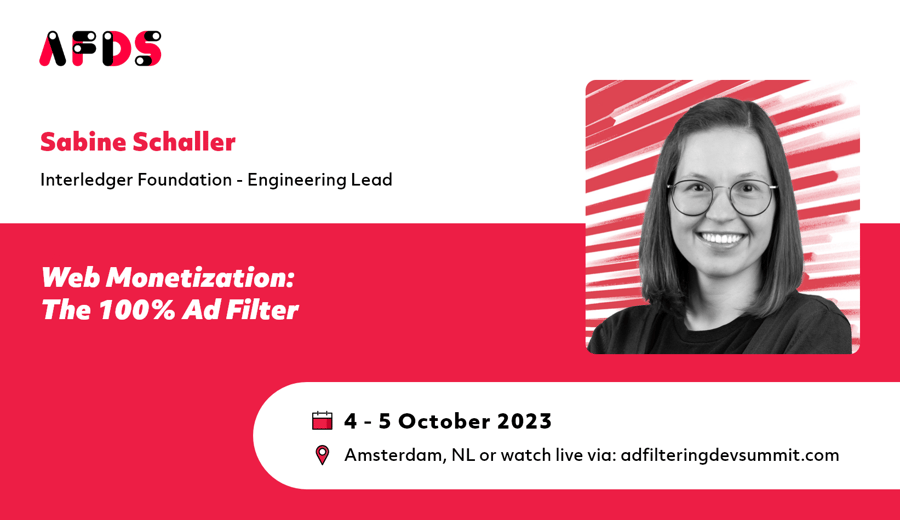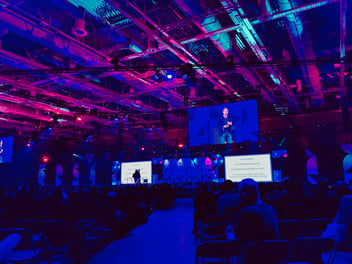AFDS 2023 welcomes Sabine Schaller: “Web Monetization - The 100% Ad Filter”

Introducing Sabine Schaller, Engineering Lead at Interledger Foundation, and a first-time speaker at Ad-Filtering Dev Summit. Her talk, titled “Web Monetization - The 100% Ad Filter”, explores a new standard of online monetization empowering user experience and supporting content creators.
Hello, ad-filtering world! My name is Sabine Schaller and I am the Engineering Lead at the Interledger Foundation where I work to make sending payments as easy as sending emails. I was originally set to introduce you to the concept of Web Monetization last year, but unfortunately, COVID upset my plans. Now I’m all the more excited to demonstrate Web Monetization’s capabilities to all of you at this year’s summit!
Seamless monetization of web content
Web Monetization is a proposed W3C web standard that enables the seamless monetization of web content without requiring user interactions, or even per-site subscriptions, while users consume the content.
As a web-monetized user, I want to browse the web without seeing ads that don’t interest me and without running into paywalls. However, I do want to support all of the great content that’s out there and potentially help content creators retain a larger share of their revenue. This is the future that we at the Interledger Foundation are building towards and that I personally am very passionate about.

A flexible approach
My talk, titled “Web Monetization - The 100% Ad Filter”, already alludes to one capability. But Web Monetization can also serve as an additional revenue stream to ads and even be used as an alternative should content creators want to disable ads for web-monetized users.
While ad-free content offerings already exist, they generally require a paid subscription. Even low-priced subscriptions often require users to subscribe for long periods of time, such as per month or year. One reason for this is that it’s expensive, if not impossible at times, to process low-value (micro) payments on traditional payment rails. Web Monetization allows websites to signal their ability to accept micropayments and, in return for these payments, serve a premium experience to users or react in some other way defined by the content creator.
Web Monetization has already undergone a significant journey of prototyping and experimentation. One company, Coil, implemented its own specific monetization model. As Coil members visited web monetized sites, Coil would stream micropayments to the sites each second, at a fixed rate that equated to $0.36 USD per hour. However, Web Monetization is much more flexible than this. It allows for streaming payments with flexible rates defined by users, one-time micropayments for accessing content on websites, as well as tipping. With Web Monetization, users can define the monetization model they want to use on each website they visit. This flexibility empowers users and websites to experiment with monetization models that best suit their needs instead of adhering to a one-size-fits-all approach.
In my talk, I will introduce you to Web Monetization on a more technical level and briefly touch on the underlying technologies that make Web Monetization possible: the Open Payments API standard and the Interledger Protocol. I hope to see you all there!




